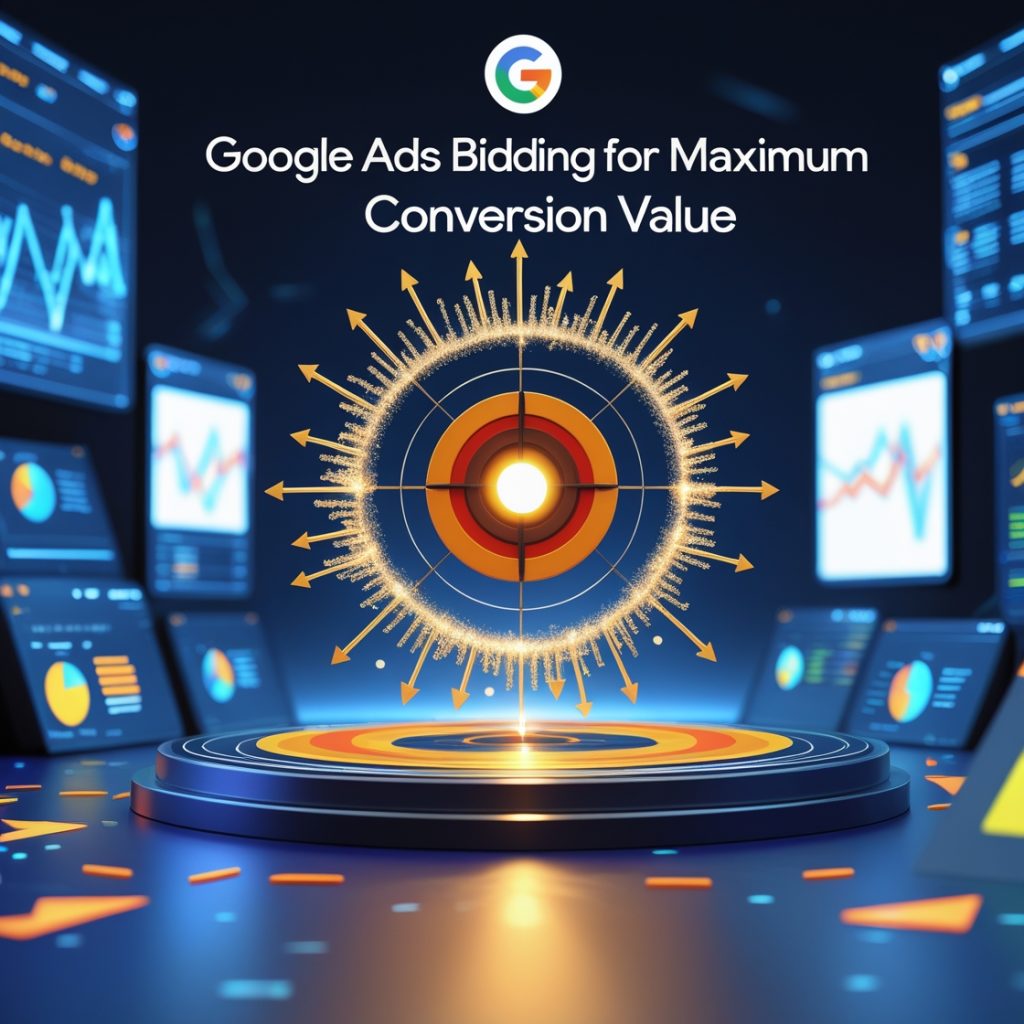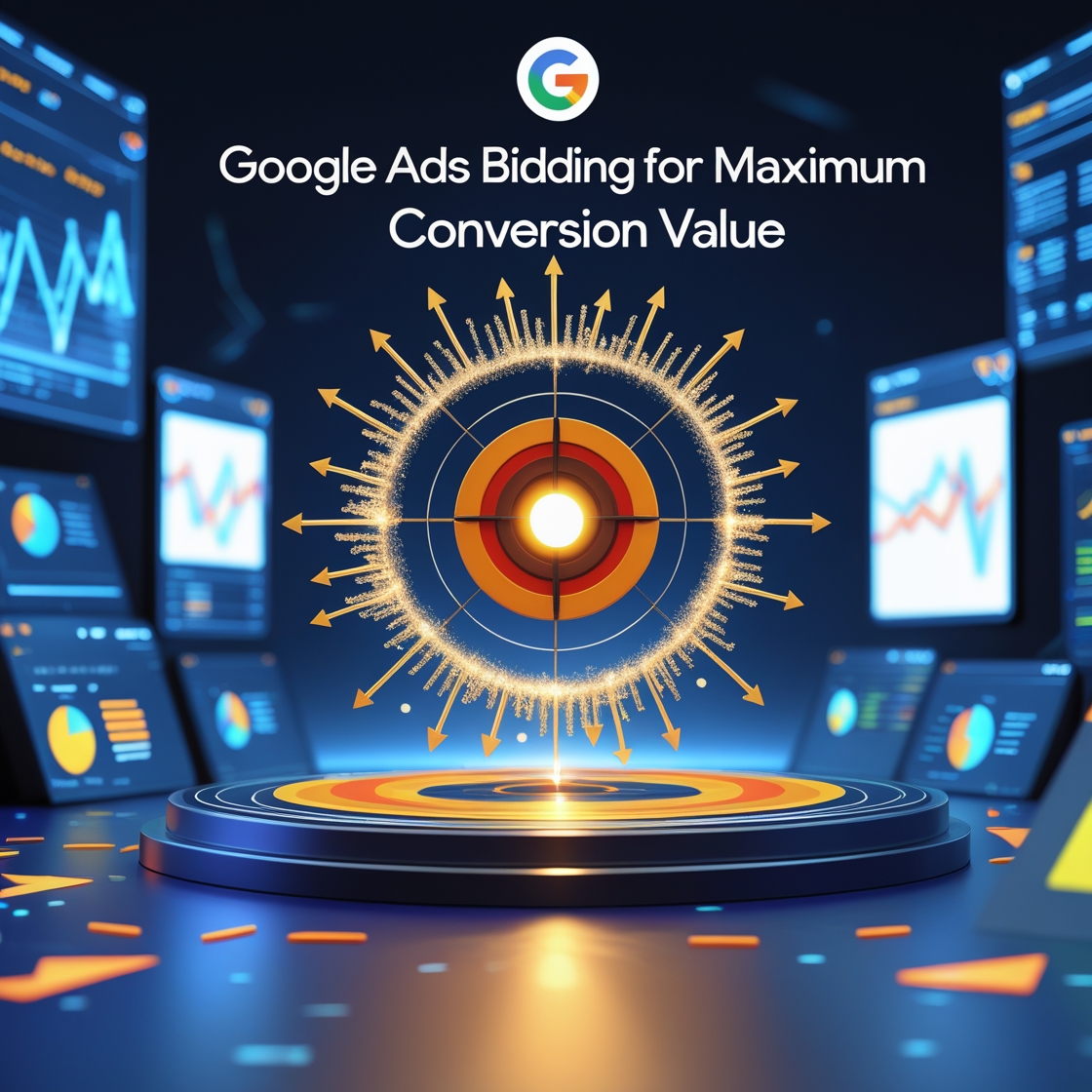Are All Google Ads Conversions Equal?
Imagine receiving two sales—one worth $500 and another worth $50. Would you treat them the same? Probably not.
If your business values some conversions more than others, it’s time to explore Maximize Conversion Value, a Smart Bidding strategy in Google Ads.

In this guide, we’ll cover:
- What is Maximize Conversion Value bidding?
- How it differs from Maximize Conversions
- When to use Maximize Conversion Value
- How it compares to Target ROAS
- Whether you need a Target ROAS with Maximize Conversion Value
- When you can implement this bidding strategy
- Optimization tips for better results
What is Maximize Conversion Value Bidding?
Maximize Conversion Value is an AI-driven Smart Bidding strategy designed to maximize the total value of your conversions while staying within your budget.
These values could represent revenue, profit, or lead scoring—whatever metrics you assign to your conversion actions.
However, its primary goal is to spend your budget efficiently. Maximizing conversion value is the secondary goal.
If you have a specific efficiency target, you may want to set a Target ROAS (Return on Ad Spend) to further refine your bidding strategy.
Maximize Conversion Value vs. Maximize Conversions
These two bidding strategies may sound similar, but they serve different purposes:
✅ Maximize Conversions: Focuses on getting the highest number of conversions within your budget.
✅ Maximize Conversion Value: Prioritizes conversions that provide the most value, even if they are fewer in number.
In simple terms:
- Maximize Conversions tells Google: “Get me as many conversions as possible.”
- Maximize Conversion Value tells Google: “Get me the most valuable conversions possible.”
Should You Use Maximize Conversion Value Bidding?
This strategy is ideal when your conversions have different levels of value.
For example:
✔️ E-commerce businesses selling products with varying price points ($50 vs. $500).
✔️ Lead generation companies that assign different values to leads based on qualification stages.
✔️ Subscription-based businesses where a full subscription is worth more than a free trial sign-up.
However, if all conversions are equal (e.g., phone calls, form submissions, or bookings), a value-based bid strategy may not be necessary.
Maximize Conversion Value vs. Target ROAS
Target ROAS is a more advanced version of Maximize Conversion Value.
- Maximize Conversion Value: Spends your budget to get the highest possible conversion value.
- Target ROAS: Ensures your return on ad spend meets a specific target before spending.
Think of it like playing darts:
🎯 Maximize Conversion Value: Throws darts frequently, aiming to get as close to the bullseye as possible.
🎯 Target ROAS: Only throws darts when confident about hitting the bullseye.
Pro tip: Start with Maximize Conversion Value to collect data. Once your ROAS stabilizes, switch to Target ROAS for better efficiency.
Where Can You Use Maximize Conversion Value Bidding?
✅ Compatible with:
- Search
- Display
- Demand Gen
- Performance Max
❌ Not available for:
- Shopping campaigns (Use Manual CPC, Maximize Clicks, or Target ROAS instead).
Tips to Optimize Maximize Conversion Value Bidding
Even though it’s an automated strategy, you can still optimize your results:
✔️ Conversion Value Rules: Set different values based on audience, device, or location for greater control.
✔️ Device Bid Adjustments: The only adjustment allowed—use it to exclude specific devices if needed.
✔️ Conversion Data: Aim for at least 50-60 conversions per 30 days for best results. If you’re below this, start with Maximize Conversions first.
Final Thoughts
Maximize Conversion Value is a great starting point if your business prioritizes conversions differently. However, scaling effectively may require transitioning to Target ROAS for long-term success.
By leveraging AI-driven bidding, businesses can boost revenue, improve efficiency, and optimize ad spend—all while focusing on the conversions that matter most.


